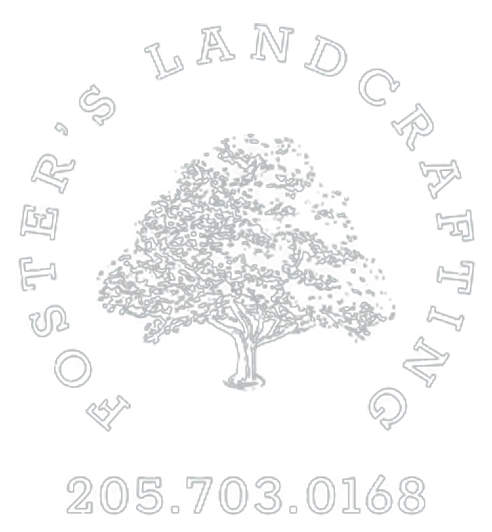The art of landcrafting is a comprehensive and intricate process that involves understanding the terrain, selecting the right tools, designing the landscape, and implementing sustainable practices. In this guide, we will explore the key aspects of landcrafting and provide valuable insights into creating sustainable and visually appealing landscapes.
Key Takeaways
- Understanding the terrain is crucial for effective landcrafting.
- Selecting the right tools can make a significant difference in the outcome of a landcrafting project.
- Designing the landscape requires creativity, attention to detail, and consideration of environmental factors.
- Implementing sustainable practices is essential for preserving the natural environment and ensuring the longevity of the landscape.
- Effective communication and collaboration with stakeholders are key to successful landcrafting projects.
The Art of Landcrafting: A Complete Guide
Understanding the Terrain
Understanding the terrain is crucial for successful landcrafting. It involves analyzing the natural features, soil composition, and drainage patterns of the land. Topography plays a significant role in determining the layout and design of the landscape.
When gathering data about the terrain, consider using a Markdown table to present structured, quantitative information such as elevation, slope, and soil types. This will help in making informed decisions during the landcrafting process.
Tip: Pay close attention to the natural contours of the land as they can influence the flow of water and the overall aesthetics of the landscape.
Selecting the Right Tools
When selecting the right tools for landcrafting, it’s essential to consider the specific needs of the terrain. Quality tools are crucial for achieving precision and efficiency. Durability is also a key factor to ensure that the tools can withstand the demands of the project.
A Markdown table can be used to compare the features of different tools, such as their size, weight, and material. This allows for a quick and clear comparison to aid in the decision-making process.
Additionally, a bulleted list can highlight the essential tools needed for landcrafting, including shovels, rakes, and pruning shears. Each tool plays a unique role in the landscaping process, contributing to the overall success of the project.
Tip: When choosing tools, prioritize ergonomic designs to minimize strain and maximize comfort during prolonged use.
Designing the Landscape
When designing the landscape, it’s crucial to consider the natural contours of the terrain and how they can be enhanced to create a harmonious environment. This involves careful planning and a keen eye for detail.
For presenting structured, quantitative data, a Markdown table can be implemented to showcase the dimensions and proportions of different landscape elements. This allows for a clear and concise representation of the design specifications.
Additionally, a bulleted list can be used to outline the key steps in the landscape design process, providing a quick reference for the essential stages of creating a captivating outdoor space.
Remember, incorporating sustainable materials and practices into the landscape design is essential for long-term environmental impact. As a guiding principle, strive to minimize waste and maximize the use of renewable resources in the design and implementation of the landscape.
Implementing Sustainable Practices
When implementing sustainable practices in landcrafting, it is crucial to consider the long-term impact on the environment. Conservation of natural resources and biodiversity should be at the forefront of every decision. Additionally, it is important to monitor and assess the effectiveness of sustainable practices through regular evaluations.
A bulleted list can be used to highlight key steps for implementing sustainable practices:
- Use of native plants and trees
- Water conservation techniques
- Soil erosion prevention methods
Remember, sustainable landcrafting is not just about the present, but about preserving the land for future generations.
Conclusion
In conclusion, the art of landcrafting is a multifaceted skill that requires creativity, precision, and a deep understanding of the natural environment. By mastering the techniques outlined in this guide, landcrafters can transform landscapes into breathtaking works of art, enhancing the beauty of our surroundings and creating sustainable, harmonious spaces for generations to come.
Frequently Asked Questions
What is landcrafting?
Landcrafting is the art of designing and sculpting the natural landscape to create functional and aesthetically pleasing outdoor spaces.
What tools are essential for landcrafting?
Essential tools for landcrafting include shovels, rakes, wheelbarrows, pruners, and a variety of gardening implements.
How do I choose the right plants for my landscape design?
Select plants that are well-suited to the local climate, soil conditions, and maintenance requirements. Consider factors such as sun exposure and water needs.
What are sustainable landcrafting practices?
Sustainable landcrafting practices focus on minimizing environmental impact, conserving natural resources, and promoting biodiversity in the landscape.
How can I prevent erosion in my landscape design?
To prevent erosion, use ground cover plants, mulch, retaining walls, and other erosion control measures to stabilize the soil.
What are some common challenges in landcrafting?
Common challenges in landcrafting include drainage issues, soil compaction, weed management, and balancing aesthetics with functionality.

